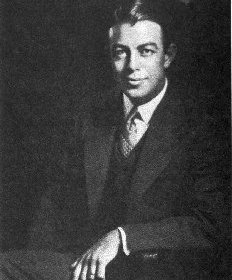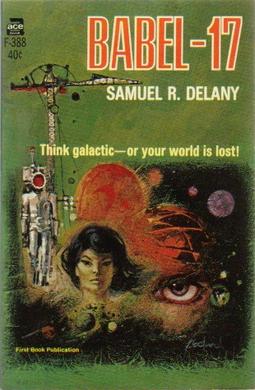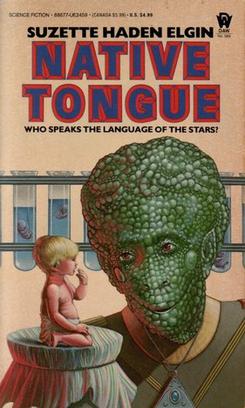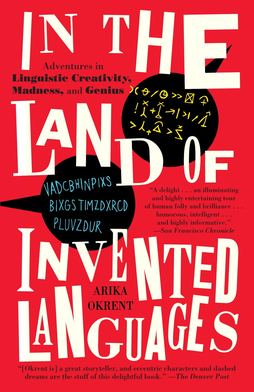
Benjamin Lee Whorf was an American linguist and fire prevention engineer who is famous for proposing the "Sapir–Whorf hypothesis." He believed that the structures of different languages shape how their speakers perceive and conceptualize the world. Whorf saw this idea, named after him and his mentor Edward Sapir, as having implications similar to Einstein's principle of physical relativity. However, the concept originated from 19th-century philosophy and thinkers like Wilhelm von Humboldt and Wilhelm Wundt.

Loglan is a logical constructed language originally designed for linguistic research, particularly for investigating the Sapir–Whorf hypothesis. The language was developed beginning in 1955 by Dr. James Cooke Brown with the goal of making a language so different from natural languages that people learning it would think in a different way if the hypothesis were true. In 1960, Scientific American published an article introducing the language. Loglan is the first among, and the main inspiration for, the languages known as logical languages, which also includes Lojban.
The idea of linguistic relativity, also known as the Sapir–Whorf hypothesis, the Whorf hypothesis, or Whorfianism, is a principle suggesting that the structure of a language influences its speakers' worldview or cognition, and thus individuals' languages determine or shape their perceptions of the world.

Semantics is the study of reference, meaning, or truth. The term can be used to refer to subfields of several distinct disciplines, including philosophy, linguistics and computer science.

Babel-17 is a 1966 science fiction novel by American writer Samuel R. Delany in which the Sapir–Whorf hypothesis plays an important part. It was joint winner of the Nebula Award for Best Novel in 1967 and was also nominated for the Hugo Award for Best Novel in 1967.
Láadan (/ˈlɑ˦ɑˈdɑn/) is a gynocentric constructed language created by Suzette Haden Elgin in 1982 to test the Sapir–Whorf hypothesis, specifically to determine if development of a language aimed at expressing the views of women would shape a culture; a subsidiary hypothesis was that Western natural languages may be better suited for expressing the views of men than women. The language was included in her science fiction Native Tongue series. Láadan contains a number of words that are used to make unambiguous statements that include how one feels about what one is saying. According to Elgin, this is designed to counter male-centered language's limitations on women, who are forced to respond "I know I said that, but I meant this".
An artistic language, or artlang, is a constructed language designed for aesthetic and phonetic pleasure. Constructed languages can be artistic to the extent that artists use it as a source of creativity in art, poetry, calligraphy or as a metaphor to address themes such as cultural diversity and the vulnerability of the individual in a globalizing world. They can also be used to test linguistical theories, such as Linguistic relativity.
Engineered languages are constructed languages devised to test or prove some hypotheses about how languages work or might work. There are at least three subcategories, philosophical languages, logical languages, and experimental languages. Raymond Brown describes engineered languages as "languages that are designed to specified objective criteria, and modeled to meet those criteria".
The study of how language influences thought, and vice-versa, has a long history in a variety of fields. There are two bodies of thought forming around this debate. One body of thought stems from linguistics and is known as the Sapir–Whorf hypothesis. There is a strong and a weak version of the hypothesis which argue for more or less influence of language on thought. The strong version, linguistic determinism, argues that without language there is and can be no thought, while the weak version, linguistic relativity, supports the idea that there are some influences from language on thought. And on the opposing side, there are 'language of thought' theories (LOTH) which believe that public language is inessential to private thought. LOTH theories address the debate of whether thought is possible without language which is related to the question of whether language evolved for thought. These ideas are difficult to study because it proves challenging to parse the effects of culture versus thought versus language in all academic fields.
Linguistic determinism is the concept that language and its structures limit and determine human knowledge or thought, as well as thought processes such as categorization, memory, and perception. The term implies that people's native languages will affect their thought process and therefore people will have different thought processes based on their mother tongues.

Ithkuil is an experimental constructed language created by John Quijada. It is designed to express more profound levels of human cognition briefly yet overtly and clearly, particularly about human categorization. It is a cross between an a priori philosophical and a logical language. It tries to minimize the vagueness and semantic ambiguity in natural human languages. Ithkuil is notable for its grammatical complexity and extensive phoneme inventory, the latter being simplified in an upcoming redesign. The name "Ithkuil" is an anglicized form of Iţkuîl, which in the original form roughly meant "hypothetical representation of a language." Quijada states he did not create Ithkuil to be auxiliary or used in everyday conversations. Instead, he wanted the language for more elaborate and profound fields where more insightful thoughts are expected, such as philosophy, arts, science, and politics.
The Ascian language is a fictional language invented by Gene Wolfe for his science fiction series The Book of the New Sun.

Native Tongue is a feminist science fiction novel by American writer Suzette Haden Elgin, the first book in her series of the same name. The trilogy is centered in a future dystopian American society where the 19th Amendment was repealed in 1991 and women have been stripped of civil rights. A group of women, part of a worldwide group of linguists who facilitate human communication with alien races, create a new language for women as an act of resistance. Elgin created that language, Láadan, and instructional materials are available.
Cultural emphasis is an important aspect of a culture which is often reflected though language and, more specifically, vocabulary. This means that the vocabulary people use in a culture indicates what is important to that group of people. If there are many words to describe a certain topic in a specific culture, then there is a good chance that that topic is considered important to that culture.

Lojban is a logical, constructed, human language created by the Logical Language Group which aims to be syntactically unambiguous. It succeeds the Loglan project.

A constructed language is a language whose phonology, grammar, and vocabulary, instead of having developed naturally, are consciously devised for some purpose, which may include being devised for a work of fiction. A constructed language may also be referred to as an artificial, planned or invented language, or a fictional language. Planned languages are languages that have been purposefully designed; they are the result of deliberate, controlling intervention and are thus of a form of language planning.
In the dystopian novel Nineteen Eighty-Four (1949), by George Orwell, Newspeak is the fictional language of Oceania, a totalitarian superstate. To meet the ideological requirements of Ingsoc in Oceania, the Party created Newspeak, which is a controlled language of simplified grammar and limited vocabulary designed to limit a person's ability for critical thinking and thus limit the person's ability to articulate abstract concepts, such as personal identity, self-expression, and free will, which are thoughtcrimes, acts of personal independence that contradict the ideological orthodoxy of Ingsoc collectivism.
The concept of linguistic relativity concerns the relationship between language and thought, specifically whether language influences thought, and, if so, how. This question has led to research in multiple disciplines—including anthropology, cognitive science, linguistics, and philosophy. Among the most debated theories in this area of work is the Sapir–Whorf hypothesis. This theory states that the language a person speaks will affect the way that this person thinks. The theory varies between two main proposals: that language structure determines how individuals perceive the world and that language structure influences the world view of speakers of a given language but does not determine it.

The Hopi time controversy is the academic debate about how the Hopi language grammaticalizes the concept of time, and about whether the differences between the ways the English and Hopi languages describe time are an example of linguistic relativity or not. In popular discourse the debate is often framed as a question about whether the Hopi have a concept of time.

In the Land of Invented Languages: Esperanto Rock Stars, Klingon Poets, Loglan Lovers, and the Mad Dreamers who Tried to Build a Perfect Language is a 2009 non-fiction book by linguist Arika Okrent about the history and culture of constructed languages, or conlangs, languages created by individuals. Okrent explores the motivations for creating a language, the challenges faced by such projects, and the outcomes of a number of high-profile conlangs. The book revolves around six conlangs: John Wilkins' unnamed 'philosophical language', Esperanto, Blissymbols, Loglan and its descendant Lojban, and the Klingon language designed for the Star Trek universe. Okrent describes her personal experiences learning and interacting with these languages and their speakers, and provides historical and linguistic analyses of their structures and features.